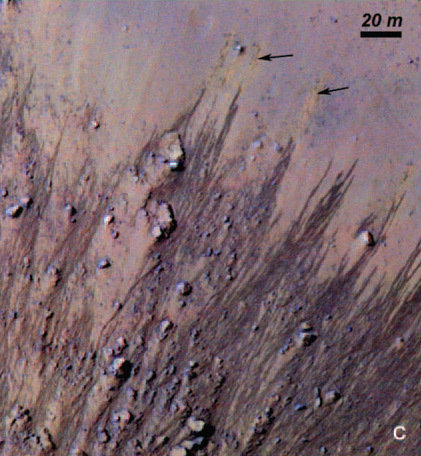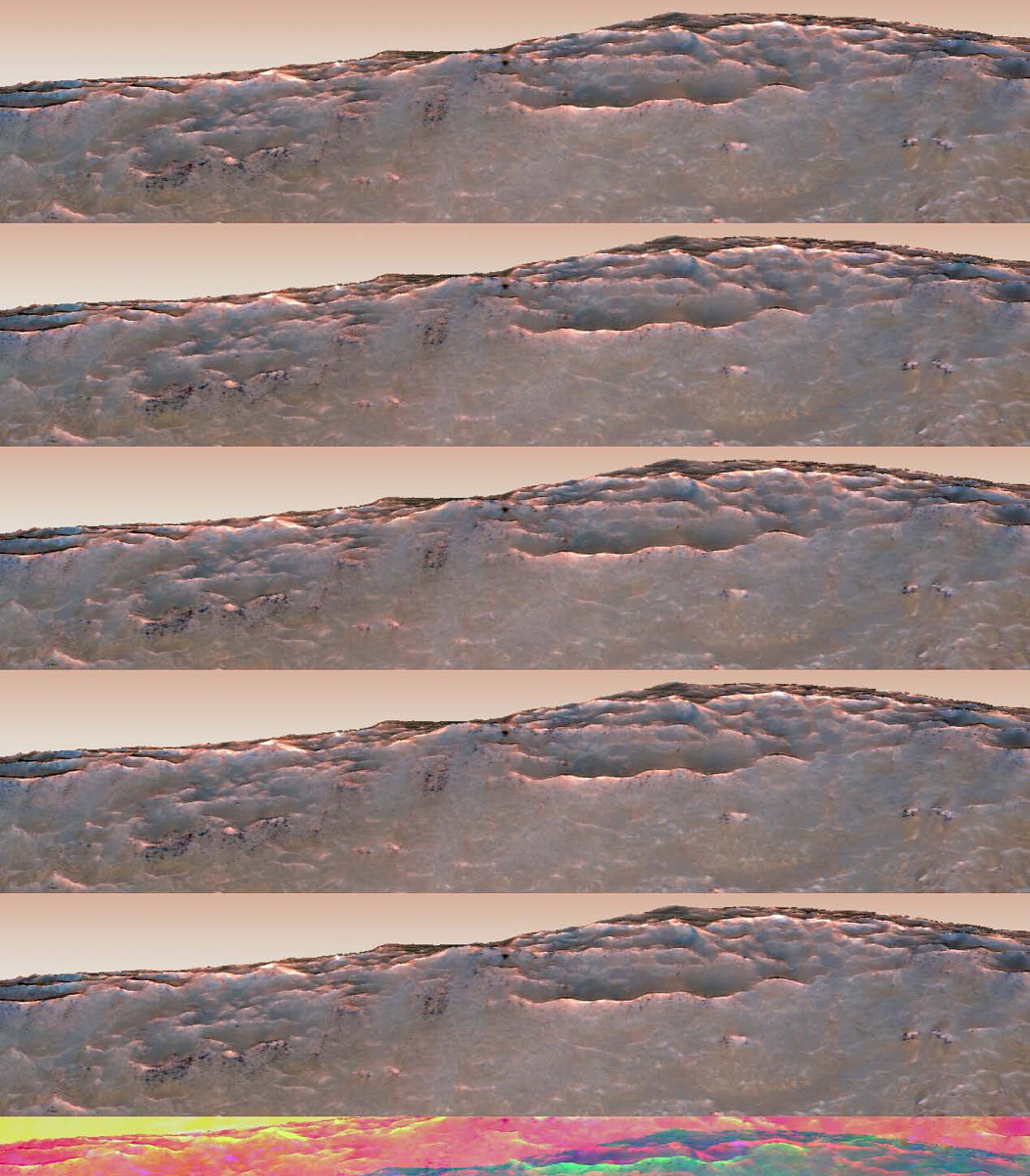Mystery Lines on Mars Carved By Water, Study Suggests

Salt water could be running down some slopes of Mars every spring, researchers suggest.
Such a finding would suggest new directions to search for any life that still existed on the Red Planet.
Clusters of dark, narrow lines that periodically emerge and lengthen on slopes in the warmer regions suggest briny water on Mars might still be flowing in a few rare places on the planet's surface.
"This is water today, not in the past," study co-author Alfred McEwen, a planetary scientist at the University of Arizona, told SPACE.com. [Photos: The Search for Water on Mars]
A great deal of evidence on the Martian surface suggests the planet was wet and perhaps capable of supporting life in the past. Although frozen water has been detected near the surface in many middle-to-high latitudes, there has been no definitive evidence that liquid water still runs across its surface.
"Water today on Mars was suggested previously, but it's not clear if those claims withstood follow-up studies," McEwen added. "That may prove true with this case as well, but for now, this is the best candidate for water today on Mars."

Strange lines on Mars
Sign up for the Live Science daily newsletter now
Get the world’s most fascinating discoveries delivered straight to your inbox.
The scientists discovered the strange lines after a University of Arizona student used a computer algorithm on pictures of the Martian surface taken by the High Resolution Imaging Science Experiment (HiRise) on the Mars Reconnaissance Orbiter. The algorithm was capable of identifying subtle changes on Mars over time. The images covered a variety of latitudes and span across approximately three Martian years.
The student, Lujendra Ojha, said in a statement: "I was baffled when I first saw those features in the images after I had run them through my algorithm. We soon realized they were different from slope streaks that had been observed before. These are highly seasonal, and we observed some of them had grown by more than 200 meters [650 feet] in a matter of just two Earth months."
These finger-like streaks extend down some slopes during the warmest months of the Martian year. They fade in winter, then re-emerge in the spring.
"What's most interesting to me is that it took so long to discover these details from images that were seen or acquired long ago but not examined in detail long ago," McEwen said. "It makes me wonder how many other things we're missing." [Video: Does Water Still Flow on Mars?]
These features, called "recurring slope lineae," reach down steep slopes such as the rims of impact craters, usually on sides facing the equator. While they can be hundreds of feet long, they are only about 1.6 to 16 feet (0.5 to 5 meters) wide, much narrower than gullies seen in the past on Martian slopes.
The scientists detail their findings in the Aug. 5 issue of the journal Science.

Is saltwater flowing on Martian slopes?
The best explanation the researchers have produced so far for these features is that they are made by salty water, which would be capable of staying liquid at colder temperatures than pure water.
A flow started by briny water could rearrange grains or change surface roughness in a way that darkens its appearance. "The flows are not dark because of being wet," McEwen said.
How these streaks brighten again when temperatures drop is harder to explain. "It's a mystery now, but I think it's a solvable mystery with further observations and experiments," he said.
As to what the source of this water might be, "that is the $10,000 question," McEwen said. "It probably has to come from vapor, either from the atmosphere or from subsurface ground ice, or it's coming from brines in the crust that are stable over geological time. But it's all speculation right now — we wish we knew."
Implications for life hunt?
When it comes to looking for extant life on Mars, "researchers mostly have thought about the deep subsurface, but the cost and difficulty of bringing a drill rig to Mars is not really feasible," McEwen said. "However, if there is extant life on Mars, it might be accessible in these brines, which gives us a new direction as to where to go."
The researchers caution their observations are not proof of liquid salt water on Mars. [7 Theories on the Origin of Life]
Still, "we've been trying to come up with alternate ideas, maybe some sort of dry avalanching process, but none of them work," McEwen said. "Why does this only seem to happen at certain temperatures and latitudes, and why darken and fade? Briny water seems to be the most viable explanation for these observations so far."
McEwen added that the ExoMars mission from NASA and the European Space Agency, planned for launch in 2016, is aimed to detect trace gases in the Martian atmosphere, including water, and might see whether these features really are caused by brines. "It could look for local enrichment of water and see if it corresponds to the times and places of these streaks," he said.
This story was provided by SPACE.com, a sister site to LiveScience. Follow SPACE.com contributor Charles Q. Choi on Twitter @cqchoi. Visit SPACE.com for the latest in space science and exploration news on Twitter @Spacedotcom and on Facebook.











